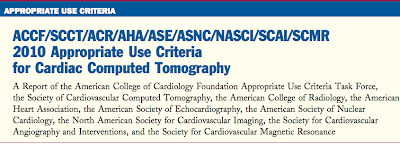Authors: Sanjay B. Nathani, M.D. (Radiodiagnosis), J.P. Agarwal, M.D. (Paediatrics).Editor: Rathachai Kaewlai, M.D.

Fig. 1: There is poor development of the lower extremities with popliteal webbing, deformed hip, ankles and calcaneus.

Fig. 2: AP and lateral spinal radiographs demonstrate absence of normal vertebra distal to T12, with L1 and L2 hemi- and butterfly vertebra. The sacrum is absent. Both iliac bones articulate with each other resulting in decreased transverse pelvic diameter.

Fig. 3: T1W and T2W sagittal MR images of the spine shows complete agenesis of L3, L4, L5 and sacrum. Conus medullaris ends at the level of T8 with a blunted tip. The distal thecal sac tapers to a narrow channel at T12.
Brief Facts
- Caudal regression syndrome is characterized by absence of segment(s) of the lumbosacral spine
- Unknown etiology but associated with maternal insulin-dependent diabetes
- Associated with multiple congenital anomalies
- On radiography, absence of segment(s) of lumbosacral spine is characteristic. There may be fusion of the iliac bones resulting in small pelvis.
- MR imaging provides information about the position and appearance of conus medullaris, which defines two distinct groups of this disease. In group I the conus ends cephalad to the lower border of L1. In group II the conus terminates below L1 known as tethered cord.
Facts
Caudal regression syndrome is a rare congenital malformation characterized by absence of variable segments of lumbosacral spine. The etiology of the syndrome is unknown. It is possibly associated with maternal insulin-dependent diabetes (16% - 50% of cases). A dominant inheritant form of lumbosacral agenesis has been shown to result from defects in the HLXB9 homeobox gene mapping to chromosome 7q36. This gene is also expressed in pancreas perhaps accounting for the association of lumbosacral agenesis with insulin and diabetes.
Motor deficits are present and correspond to the level of vertebral agenesis. Associated conditions are OEIS complex (omphalocele, cloacal extrosphy, imperforate anus, spinal deformities), VATER syndrome, congenital heart defects, genitourinary complaints with unilateral renal agenesis, hydronephrosis, pelvic and horseshoe kidneys, epispadias and hypospadias, orthopedic deformities such as hip dislocation, flexion contractures, genu recurvatum, posterior compartment atrophy, talipes deformities and scoliosis, progressive neurological deficits and back and leg pain, uterine anomalies or rectovaginal fistulas.
Renshaw reviewed 22 patients over 18 years and proposed a classification as follows:
Type I - total or partial unilateral sacral agenesis
Type II - partial sacral agenesis but bilaterally symmetrical defect
Type III - variable lumbar and total sacral agenesis with the ilia articulating with the sides of the lowest vertebra present
Type IV - variable lumbar and total sacral agenesis with the caudal endplate of the lowest vertebra resting above either fused ilia or an iliac amphiarthrosis.
As seen on MR imaging, the position of the conus defines two distinct groups of patients with sacral agenesis. In group I, the conus ends cephalic to the lower border of L1. The conus typically deforms and terminates abruptly at T11 or T12 as if the normal distal tip was absent. The distal central canal may be slightly dilated as a terminal hydromyelia. In this group, the sacrum usually ends at or above S1. Coronal T1WI will show Christmas tree configuration formed by the distal thecal sac, root sleeves and nerve roots within the epidural fat of the spinal canal.
In group II, the conus ends lower, below L1, and is elongated, tethered by a thick filum. There can be associated terminal myelocystocele, transitional lipoma, or elongated cord with terminal hydromyelia. Neurological deficit is more in patients with low tethered cords.
About Authors: Drs. Nathani and Agarwal work for Goyal Hospital and Research Center in Jodhpur, Rajasthan, India. Their work does not have any support for the work in the form of grants, equipments or drugs.
1 . Renshaw T.S. Sacral Agenesis. The Pediatric Spine -Principles and Practice. 1:2214,1994, Raven Press, NewYork
2. Phillips W.A. Sacral Agenesis. Spine - Principles andPractice. 1:2214,1994, Raven Press, New York
3. A.James Barkovich, Congenital Anomalies of the spine.In: Paediatric Neuroimaging ,Vol 2 ,3rd edition, Lippincott Williams & Wilkins,2000 (650-651),
4. Phyllis Glanc et al, The Fetal Musculoskeletal System. In : Carol M. Rumack's Diagnostic Ultrasound;Vol 2, 2nd edition, Mosby. (1224).
5. Beryl R. Benacerraf,Caudal Regression Syndrome and Sirenomelia; in Ultrasound of Fetal Syndromes,edition 1998, (page 250-254); Churchill Livingstone,Philadelphia.
6. Thomas.P.Naidich,Susan I.Blaser,Bradley M.Delman,Congenital Anomalies of Spine and Spinal Cord. In:Scott W. Atlas, Magnetic Resonance Imaging of the Brain and Spine(vol 1) 3rd edition. Philadelphia: Lippincott Williams & Wilkins,2002;( 1589-1593)
7. Renshaw, T. S., 1978. Sacral agenesis: a classification and review of twenty-two cases. Journal of Bone and Joint Surgery, 60A, 373-383.



























